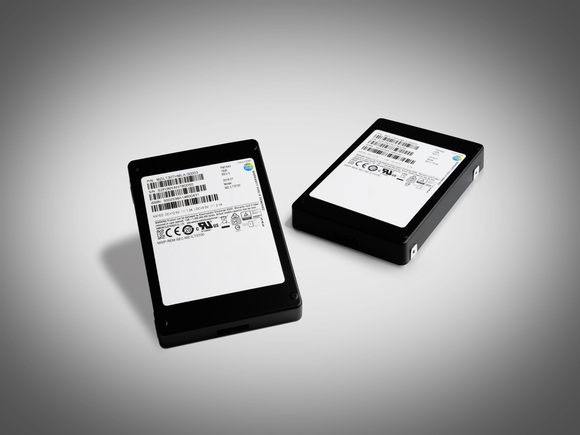Samsung introduced a new SSD-drive with a capacity of 32 TB
The drive is designed for 4th generation V-NAND technology.

SSD-drives are becoming increasingly popular systems for storing information. The main reason is that the production of SSD is becoming cheaper, the price of drives is decreasing, the density of recording information is increasing. Now they are available for a much wider range of customers than 2-3 years ago. Manufacturers do not stop at what has been accomplished and are trying to develop more sophisticated, fast and energy-efficient drives with large amounts of memory.
Recently, Seagate has introduced the world's most capacious SSD with a capacity of 60 TB. Samsung has announced the release of a somewhat less capacious 32 TB storage device. But this system was created using the 4th generation V-NAND technology, thanks to which it was possible to achieve a more dense distribution of information and reduce the size of the drive. Samsung's SSD is 2.5 inches, and Seagate is 3.5.
The new SSD is not designed for installation in regular laptops or PCs. This drive is positioned as a corporate storage system. Samsung SSD will be installed in server hardware, data storage systems. Telecommunication companies working with an ever faster increasing data flow require manufacturers to produce more and more capacious data storage systems with increased information recording density. The company is trying to produce solutions that meet the current needs of such companies.
')
Samsung plans to reach 100 TB for an ordinary SSD by 2020. As mentioned above, Samsung's 32TB SSD is the first device built using fourth-generation V-NAND technology. V-NAND is a technology of "vertical" flash memory - 3D NAND. The memory cells are sorted out not only in the plane, but also vertically, in layers. The current SSD uses 64-layer memory. In the third generation V-NAND was 48 layers.
In the 48-level array, the vertical layers formed a single whole thanks to the connection through the 1.8 billion channel openings. Such holes are created using a special etching technique. Each chip, manufactured by the previous method, as a result, contains 85.3 billion cells. Each cell stores 3 bits of data. The 3rd generation V-NAND chip provides 256 GB of data storage. Such chips are stacked in layers.
According to Samsung, 32 TB model is faster and more reliable than the previous record holder with a volume of 15.36 TB. The new disc specifications will be presented later, although there are already some technical details. This SSD model refers to the SAS (serial-attached SCSI) drive type. It is incompatible with NVMe slots, which are becoming more common in new type of storage devices. Samsung believes that SAS will dominate in the near future, so in the near future the company plans to release SSDs of exactly this type.
The South Korean corporation also introduced the Z-SSD, NAND flash memory, which is positioned as a repository for data centers where the cache or other temporary data will be placed. These types of media are designed for installation in flash arrays, where, during the processing of large data arrays by high-loaded computer systems, intermediate results of calculations are stored. The speed of sequential data writing in Z-SSD is 1.6 times higher than that of the Samsung PM963 NVMe SSD. Z-SSD will be released next year.
Source: https://habr.com/ru/post/396805/
All Articles